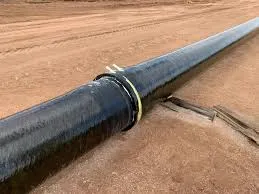
-
 Afrikaans
Afrikaans -
 Albanian
Albanian -
 Amharic
Amharic -
 Arabic
Arabic -
 Armenian
Armenian -
 Azerbaijani
Azerbaijani -
 Basque
Basque -
 Belarusian
Belarusian -
 Bengali
Bengali -
 Bosnian
Bosnian -
 Bulgarian
Bulgarian -
 Catalan
Catalan -
 Cebuano
Cebuano -
 China
China -
 China (Taiwan)
China (Taiwan) -
 Corsican
Corsican -
 Croatian
Croatian -
 Czech
Czech -
 Danish
Danish -
 Dutch
Dutch -
 English
English -
 Esperanto
Esperanto -
 Estonian
Estonian -
 Finnish
Finnish -
 French
French -
 Frisian
Frisian -
 Galician
Galician -
 Georgian
Georgian -
 German
German -
 Greek
Greek -
 Gujarati
Gujarati -
 Haitian Creole
Haitian Creole -
 hausa
hausa -
 hawaiian
hawaiian -
 Hebrew
Hebrew -
 Hindi
Hindi -
 Miao
Miao -
 Hungarian
Hungarian -
 Icelandic
Icelandic -
 igbo
igbo -
 Indonesian
Indonesian -
 irish
irish -
 Italian
Italian -
 Japanese
Japanese -
 Javanese
Javanese -
 Kannada
Kannada -
 kazakh
kazakh -
 Khmer
Khmer -
 Rwandese
Rwandese -
 Korean
Korean -
 Kurdish
Kurdish -
 Kyrgyz
Kyrgyz -
 Lao
Lao -
 Latin
Latin -
 Latvian
Latvian -
 Lithuanian
Lithuanian -
 Luxembourgish
Luxembourgish -
 Macedonian
Macedonian -
 Malgashi
Malgashi -
 Malay
Malay -
 Malayalam
Malayalam -
 Maltese
Maltese -
 Maori
Maori -
 Marathi
Marathi -
 Mongolian
Mongolian -
 Myanmar
Myanmar -
 Nepali
Nepali -
 Norwegian
Norwegian -
 Norwegian
Norwegian -
 Occitan
Occitan -
 Pashto
Pashto -
 Persian
Persian -
 Polish
Polish -
 Portuguese
Portuguese -
 Punjabi
Punjabi -
 Romanian
Romanian -
 Russian
Russian -
 Samoan
Samoan -
 Scottish Gaelic
Scottish Gaelic -
 Serbian
Serbian -
 Sesotho
Sesotho -
 Shona
Shona -
 Sindhi
Sindhi -
 Sinhala
Sinhala -
 Slovak
Slovak -
 Slovenian
Slovenian -
 Somali
Somali -
 Spanish
Spanish -
 Sundanese
Sundanese -
 Swahili
Swahili -
 Swedish
Swedish -
 Tagalog
Tagalog -
 Tajik
Tajik -
 Tamil
Tamil -
 Tatar
Tatar -
 Telugu
Telugu -
 Thai
Thai -
 Turkish
Turkish -
 Turkmen
Turkmen -
 Ukrainian
Ukrainian -
 Urdu
Urdu -
 Uighur
Uighur -
 Uzbek
Uzbek -
 Vietnamese
Vietnamese -
 Welsh
Welsh -
 Bantu
Bantu -
 Yiddish
Yiddish -
 Yoruba
Yoruba -
 Zulu
Zulu
Understanding FRP Flanges and Blinds for Enhanced Performance in Industrial Applications
Understanding FRP Flanges and Blinds A Comprehensive Overview
Fiber Reinforced Polymer (FRP) materials have revolutionized various industries by offering exceptional durability, corrosion resistance, and lightweight properties. Among the numerous applications of FRP, FRP flanges and blinds are gaining attention for their unique advantages. This article will delve into the features, benefits, and applications of FRP flanges and blinds, exploring their pivotal role in modern engineering and construction.
What Are FRP Flanges and Blinds?
FRP flanges are specialized fittings used to connect sections of piping systems. They are designed to create a mechanical connection between pipes, tanks, and other equipment. The manufacturing process involves embedding fibers within a polymer matrix, which allows for tailored mechanical properties, offering enhanced strength and resistance to environmental factors.
On the other hand, FRP blinds are flat disc-like components that cover the ends of pipes, effectively isolating sections of the piping system. These blinds are crucial for maintenance activities, allowing for secure isolation without the risk of leakage. The lightweight nature of FRP blinds facilitates easy handling and installation, making them a preferred choice across various sectors.
Advantages of FRP Flanges and Blinds
1. Corrosion Resistance FRP materials are highly resistant to corrosion, which is a significant advantage over traditional metal materials. This resistance extends the lifespan of piping systems, reducing the frequency of replacements and maintenance.
2. Lightweight Compared to metal counterparts, FRP flanges and blinds are much lighter. This feature simplifies handling during installation and reduces structural load, making them ideal for projects where weight is a critical factor.
3. Customizability FRP's manufacturing process allows for the customization of mechanical properties, shapes, and sizes. This flexibility ensures that specific project requirements can be met, whether for pressure ratings or unique configurations.
4. Thermal Insulation FRP materials provide excellent thermal insulation, which can be an essential characteristic in applications dealing with extreme temperatures. This attribute helps in maintaining energy efficiency within systems.
frp flange and blind

Applications of FRP Flanges and Blinds
FRP flanges and blinds find extensive applications across diverse industries, including
- Chemical and Petrochemical Industries Due to their resistance to aggressive chemicals, FRP components are commonly used in pipelines and storage tanks within these sectors.
- Water and Wastewater Treatment The corrosion resistance of FRP materials makes them suitable for use in water treatment facilities, where contact with harsh chemicals is common.
- Energy Sector In renewable energy applications, particularly in wind and solar power installations, FRP flanges and blinds can be effectively utilized to manage fluid dynamics without fear of rust or corrosion.
- Construction and Infrastructure FRP materials are increasingly being used in buildings and bridges, contributing to lightweight construction practices and longevity of structures.
Conclusion
The utilization of FRP flanges and blinds is a testament to the ongoing evolution of materials in engineering and construction. Their unique properties offer solutions that traditional materials cannot, making them invaluable across various sectors. As industries continue to seek innovative methods to enhance efficiency and reduce costs, FRP components will likely play an even more significant role. By understanding the features and advantages of FRP flanges and blinds, engineers and project managers can make informed decisions that lead to more resilient and sustainable infrastructure. Embracing these advanced materials heralds a future where performance, durability, and efficiency are harmoniously met, paving the way for greater technological advancements in the field.
Latest news
-
Exploring the Benefits of Top Hammer Drifter Rods for Enhanced Drilling PerformanceNewsJun.10,2025
-
High-Precision Fiberglass Winding Machine for GRP/FRP Pipe Production – Reliable & Efficient SolutionsNewsJun.10,2025
-
FRP Pipes & Fittings for Shipbuilding - Corrosion-Resistant & LightweightNewsJun.09,2025
-
Premium FRP Flooring Solutions Durable & Slip-ResistantNewsJun.09,2025
-
Premium Fiberglass Rectangular Tanks Durable & Lightweight SolutionNewsJun.09,2025
-
Tapered Drill String Design Guide Durable Performance & UsesNewsJun.09,2025









